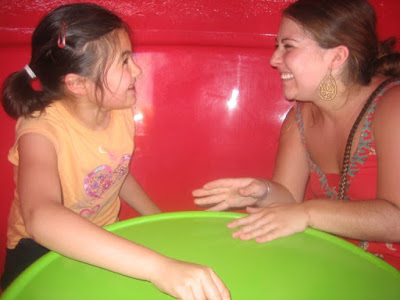BY AMY PINDER
C/O Buffalo Healthy Living
Floortime therapy does not necessarily entail spending time on the floor with your child – but it could. Floortime therapy is a key component of the DIR model, developed by Dr. Stanley Greenspan and Dr. Serena Wieder. Using this approach, caregivers and professionals are trained to consider a child’s Developmental capacities and Individualized sensory profile, in addition to establishing and maintaining a positive, trusting Relationship to strengthen functional life capacities and develop meaningful connections. Depending on the child’s interests, motivations, current skills and sensory needs, therapy may take place on the floor. But, it could also be conducted in any other imaginable location.

This approach is particularly popular for children on the autism spectrum who struggle to match the expectations held by a predominantly neurotypical society (those who are not autistic). Often, children with autism process sensory information, like sounds, odors, textures and lights, very differently. They also tend to struggle with motor planning, language processing and speech production, making it difficult to carry out typical daily routines and communicate effectively. These differences often interfere with their ability to experience the benefits of human connection, and form meaningful relationships.
Floortime therapy bridges the gap between what a child can and cannot yet do by outlining a set of principles that address each child’s unique needs. Key principles include sharing in activities that are pleasurable to the child, learning to read and follow the child’s cues, and adjusting activities to best support the child’s sensory profile. Floortime sessions are typically play-based and always begin with supportive strategies to help a child achieve emotional regulation. This may involve rocking in a swing, dimming lights, or listening to relaxing music. Once in a regulated state, children are emotionally available to learn and connect with people and objects in their environment. In this connected state, children slowly learn to share and maintain attention, engage in purposeful two-way communication, build bridges between their ideas, solve problems, form a sense of self, and empathize with others – essential skills for success in many aspects of life.
To learn more about the DIRFloortime model, visit the Profectum Academy at www.profectum.org, and download a free Parent Toolbox for engaging and interacting with children through play. Locally, Buffalo Hearing & Speech Centers employs the DIRFloortime model. Visit www.askbhsc.org or call 716-885-8318.
In the meantime, do your best to tune into things that excite and upset your child. Try to create an environment that highlights their passions and supports their challenges. Most importantly, be patient and have fun!
About the Author:
Amy Pinder, MA, CCC-SLP is an ASHA certified Speech-Language Pathologist with over ten years of experience working with individuals with neurodevelopmental differences. She provides speech and language therapy for students with autism spectrum disorders at a private, specialized school that utilizes the DIR model to guide curriculum. Amy also incorporates joyful, regulatory, and play-based movement such as yoga and hoop dance into her practice to encourage her clients to engage, explore, increase their capacities, and effectively communicate through meaningful, experienced-based activities.
Originally posted by Buffalo Healthy Living Magazine . Republished with permission.

